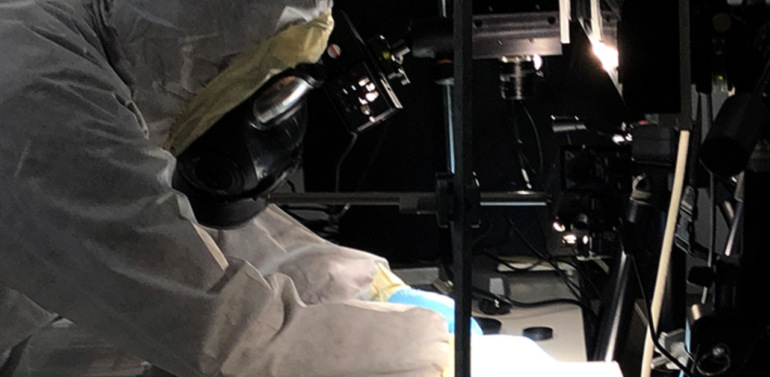
A team of Spanish researchers, coordinated by the University of Seville, has published the first results of detecting the coronavirus that causes COVID-19 using new optical technology. This tool could potentially be used as a rapid and easy-to-implement mass screening method.
This new technology, whose first results are reported in the journal Scientific Reports, from the Nature group, has obtained results in the detection of SARS-CoV-2 in nasopharyngeal exudate from symptomatic people (the same samples used in a PCR test) with a sensitivity of 100% and a specificity of 87.5%. It has also been possible to detect the presence of SARS-CoV-2 in fresh saliva from asymptomatic people, as well as to detect, differentiate and quantify two types of synthetic viruses (lentivirus and synthetic coronavirus) in two types of biofluids (saline solution and artificial saliva). The main advantage of this new technology over PCR lies in the speed of sample processing and the ability of the optical system to simultaneously analyse a large number of samples.
The authors of the study caution that these results should still be viewed with caution, as they are a ‘proof of concept’, with relatively small numbers of cases, under partially controlled laboratory conditions. They are therefore currently working on validating this new technology under generic conditions, including new virus variants and vaccine effects.
This work is the result of the C-CLEAN project, funded by the Instituto de Salud Carlos III (Ministry of Science and Innovation of the Government of Spain), in the Emergency Call for Research Projects on SARS-CoV-2 and Covid-19 disease.
The newly developed technique detects viruses in liquid droplets and dry residues deposited on surfaces by using hyperspectral imaging and data processing based on advanced statistics and artificial intelligence. It also rapidly processes multiple samples simultaneously, without sample contact or need for reagents and with relatively simple equipment, usable by personnel with minimal training. It uses standard optical equipment developed in such a way that it can be implemented in resource-constrained environments. The technique has been patented and the authors are analysing various options for rapid and affordable implementation.
In addition to validating the results obtained, the researchers are continuing to work at full speed to study the applicability to other types of viruses and to move from a screening technology to a diagnostic technology. They also intend to test in crowded spaces, such as airports and other transport hubs, or at mass events. They also aim to develop a version of their technology suitable for use on mobile phones.
The idea for the method and the design of the system comes from the principal investigator, Emilio Gómez González, professor of Applied Physics at the School of Engineering of the University of Seville, where he directs his Interdisciplinary Physics Group (GFI), researcher of the Applied Neuroscience Group of the Institute of Biomedicine of Seville (IBIS) and collaborator of the HUMAINT Project of the Joint Research Centre (JRC).
The C-CLEAN project has been developed by 30 researchers from 11 national institutions, with broad representation from Andalusia and support from European institutions. In that investigation have been participated the TEDAX-NRBQ Group of the National Police Force, the Andalusian Network for the Design and Translation of Advanced Therapies (RAdytTA), the Institute of Biomedicine of Seville (IBIS), the Calar Alto Observatory Astronomical Centre (Almeria), the Virgen del Rocío University Hospital (Seville), the Hospital Universitario Virgen Macarena (Seville), the Instituto de Astrofísica de Andalucía, IAA-CSIC (Granada), the University of Cádiz-INIBICA and the Corporación Tecnológica de Andalucía (CTA), with the support of the HUMAINT Project of the Joint Research Centre (JRC) of the European Commission. It has also had the collaboration of three companies: Cambrico Biotech, SAMU and the Centro Educacional Residencial Dr. Gregorio Medina Blanco.


